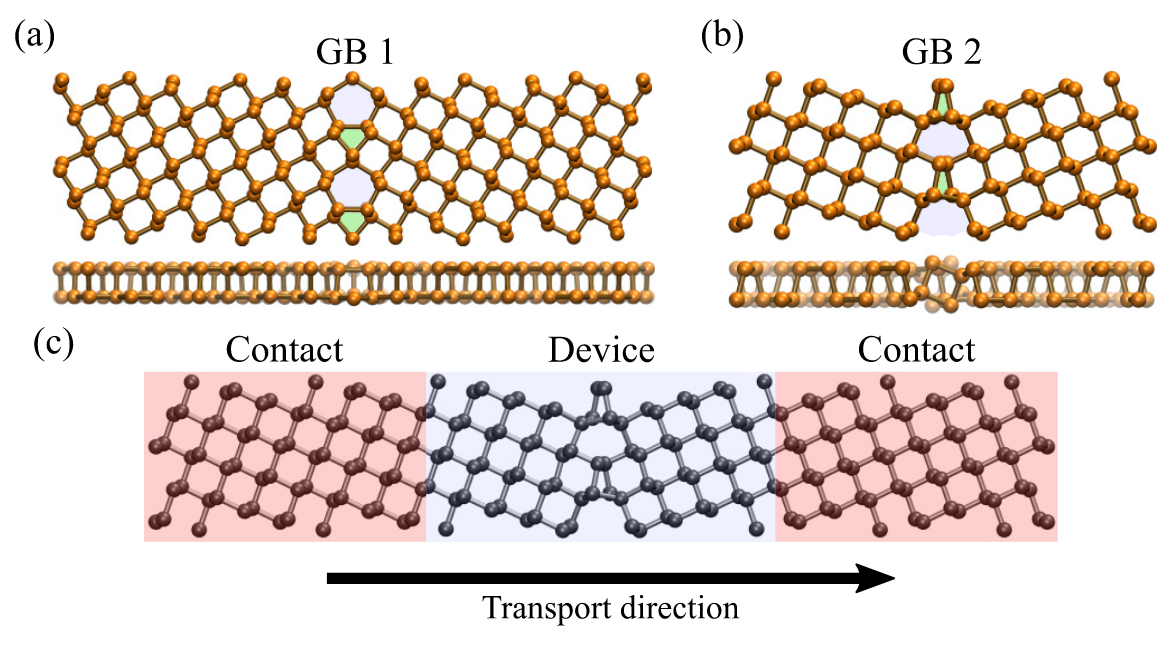Two-dimensional materials have great potential for applications as high-performance electronic devices and efficient thermal rectificators. Among them, pristine phosphorene, a single layer of black phosphorus, has shown promising properties such as ultrahigh charge mobility, a tunable band gap, and mechanical flexibility. However, the introduction of extended structural defects such as grain boundaries (GBs) has, in general, a detrimental influence on the electronic and thermal transport properties by causing additional scattering events. In this computational study, based on a combination of a density-functional parametrized tight-binding approach with the Landauer theory of quantum transport, we show that applying a strain can help to partially counteract this effect. We exemplify this by addressing the electronic and phononic transmission of two specific grain boundaries containing 5|7 (GB1) and 4|8 (GB2) defects, respectively. Under uniaxial strain, the electronic band gaps can be reduced for both types of GB, while the respective thermal conductance is only weakly affected despite rather strong changes in the frequency-resolved phonon transmission. The combination of both effects mainly produces an increase of about a factor of 2 in the thermoelectric figure of merit ZT for a GB2 system. Hence, our results provide insights into the manipulation of transport properties as well as the generation of potential thermoelectric materials based on phosphorene.

Two-dimensional materials have great potential for applications as high-performance electronic devices and efficient thermal rectificators. Among them, pristine phosphorene, a single layer of black phosphorus, has shown promising properties such as ultrahigh charge mobility, a tunable band gap, and mechanical flexibility. However, the introduction of extended structural defects such as grain boundaries (GBs) has, in general, a detrimental influence on the electronic and thermal transport properties by causing additional scattering events. In this computational study, based on a combination of a density-functional parametrized tight-binding approach with the Landauer theory of quantum transport, we show that applying a strain can help to partially counteract this effect. We exemplify this by addressing the electronic and phononic transmission of two specific grain boundaries containing 5|7 (GB1) and 4|8 (GB2) defects, respectively. Under uniaxial strain, the electronic band gaps can be reduced for both types of GB, while the respective thermal conductance is only weakly affected despite rather strong changes in the frequency-resolved phonon transmission. The combination of both effects mainly produces an increase of about a factor of 2 in the thermoelectric figure of merit ZT for a GB2 system. Hence, our results provide insights into the manipulation of transport properties as well as the generation of potential thermoelectric materials based on phosphorene.
